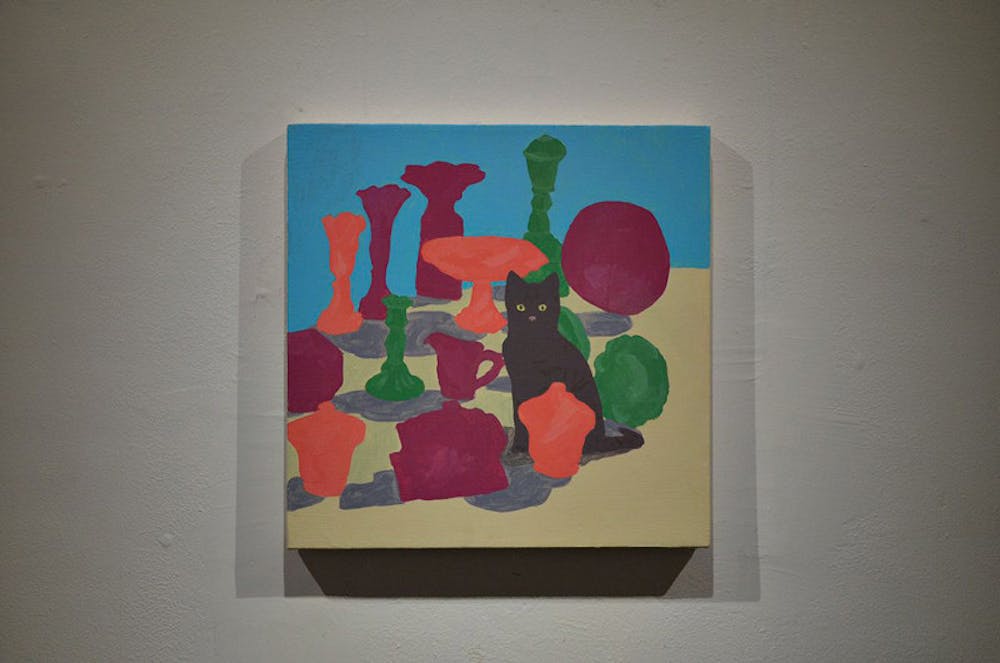Walking into the Sarah Doyle Women’s Center, the viewer is met by a large pastel pink painting covered in seemingly simple shapes — upon closer inspection, the shapes reveal themselves to be silhouetted human profiles and glass vessels. The painting is one of nine acrylic pieces that comprise Joshua Sevits’ “Free Weed” solo exhibition at the Sarah Doyle Gallery.
Once every two years, the Sarah Doyle Gallery accepts artists’ applications to have their work displayed, said Sarah Cheung ’16, gallery coordinator. Works are chosen based purely on quality and often include “feminist references,” she said.
“A lot of the artists are not the most well-known,” Cheung said. “Part of what the Sarah Doyle Gallery aims to do is promote artists that aren’t really out there already.”
“Free Weed” aims to display the “varied associations that collected objects bring forth” and provide “humorous juxtaposition” and “uncanny associations,” according to the gallery’s website.
Sevits hails from and currently resides in Vermont, which gives his works a “homey” feeling, Cheung said. Working in a rural setting, Sevits “relies on the Internet as the portal to the outside” a concept that he tries to display in his paintings, she said.
“His works are very personalized and explore the themes of his childhood,” she added.
Other paintings in the exhibition include “A Graveyard,” which takes up an entire wall of the gallery with its acrylic-painted styrofoam cutouts of red tombstones. The tombstones are engraved in blue with phrases such as “kill all hippies” and “power soul.”
These dynamic red shapes contrast with the flatness of a painting on another wall entitled “Friends.” From afar, the canvas looks like a plain, gray pastel painting, but when approached at the correct angle, the viewer notes carved images of two busts. The seemingly flat pastel color comes to life with the subtle details that define Sevits’ work.
“I continue to carve a space among naive, folk, pop art and curio,” Sevits wrote in his artists’ statement at the gallery. “I’m interested in opportunities to emphasize these American art forms.”
Sevits’ works “depict such non-art objects as if they play the straight man in a comedy routine” and focus on his childhood reminiscences of “coexisting with the fragile objects” within everyday life, the statement reads.
“It’s an interesting way of reducing people in a way in which they can be compared to objects,” said Zachary Dixon ’18, an observer at the exhibition. “Some of it seems to be abstract, but others don’t seem to have a point to it.”
“Free Weed” will be on display until Feb. 26.





